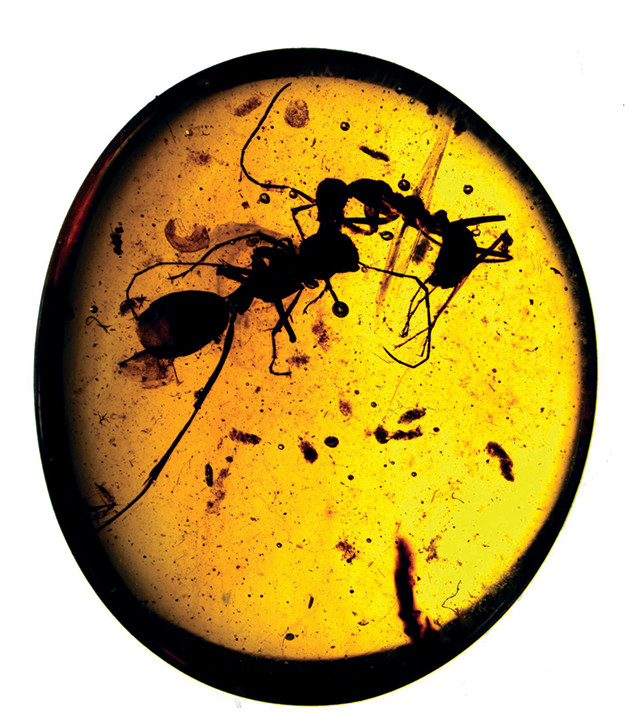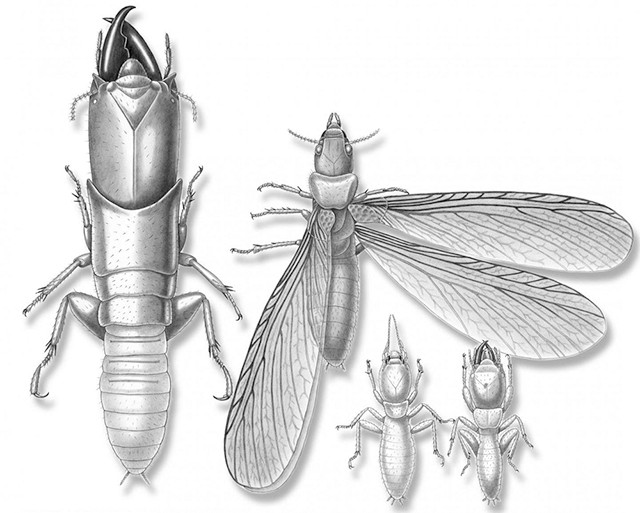
by Lucas Joel Thursday, June 16, 2016

Cretaceous-aged ants, thought to be fighting one another, preserved in amber. Credit: AMNH/D. Grimaldi and P. Barden.

Researchers recently identified previously unknown termites in fossilized amber samples. At left is the soldier caste of Gigantotermes rex, while at right are specimens of Krishnatermes yoddha from three castes: winged reproductive, worker and soldier. Credit: AMNH/D. Grimaldi.
Many insects are social animals. Some, including ants, form colonies with complex social hierarchies, wherein specific roles like reproduction and colony construction are assigned to specific groups of ants, like queens or workers, for example. This kind of sociality, known as eusociality, is found in many other insects, like beetles, honeybees and termites. When it evolved, however, has remained unclear. Until now, the earliest evidence of eusociality came from 20-million-year-old fossils, even though the insect lineages were known to be much older. But two new fossil discoveries have pushed the first known appearance of eusociality back by 80 million years.
Two new studies, both published in Current Biology, describe ants and termites preserved in 100-million-year-old fossil amber found in Myanmar. “In the Cretaceous amber we examine[d], the ants and termites represent the earliest branches of each evolutionary tree,” said Phillip Barden, a graduate student in comparative biology at the American Museum of Natural History, in a press release. “We wanted to know how social these creatures were, if they were social at all.”
And in fact, both the ant and termite fossils preserved in the amber specimens exhibited morphologies and behaviors known from their modern counterparts to indicate different hierarchical roles, the researchers reported. For instance, worker ants — females without wings — of the species Gerontoformica spiralis were discovered, while, in another specimen, ants from two different species were preserved with their mandibles clasped around the other — thought to represent early interspecies combat, which is common among worker ants. In still other pieces of amber, termites thought to belong to three different castes — reproductive, worker and soldier — within the same newly discovered species, Krishnatermes yoddha, were identified.
© 2008-2021. All rights reserved. Any copying, redistribution or retransmission of any of the contents of this service without the expressed written permission of the American Geosciences Institute is expressly prohibited. Click here for all copyright requests.